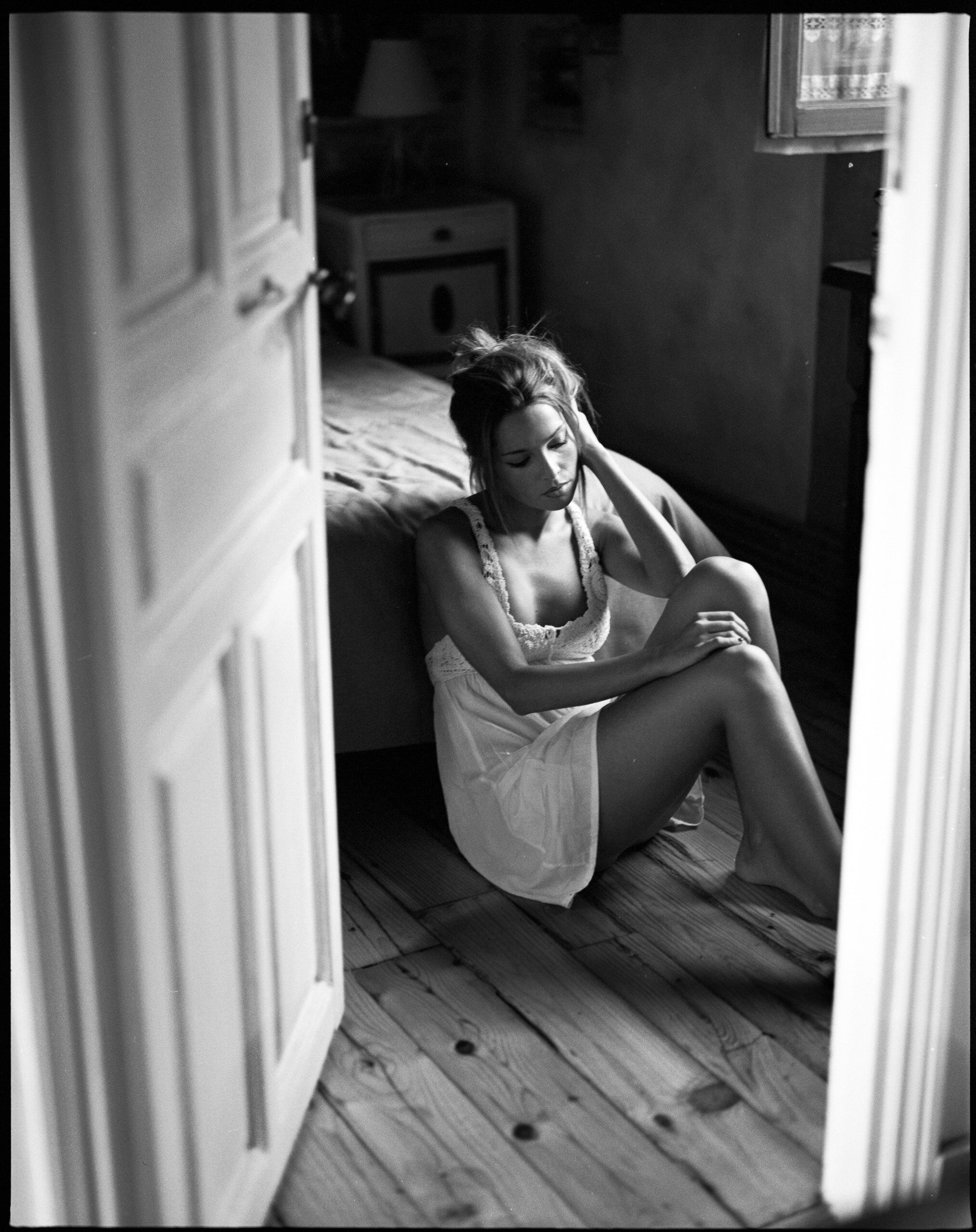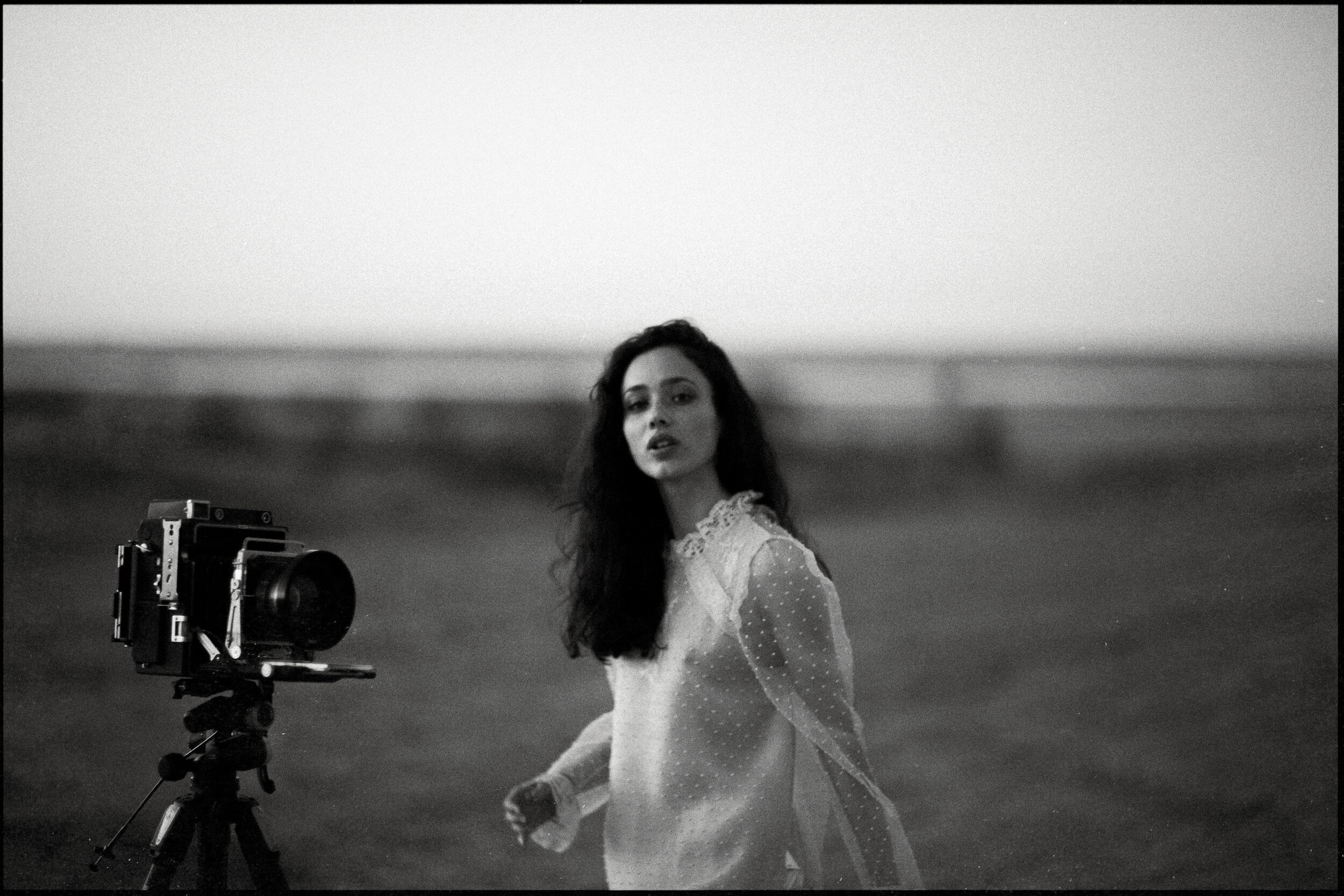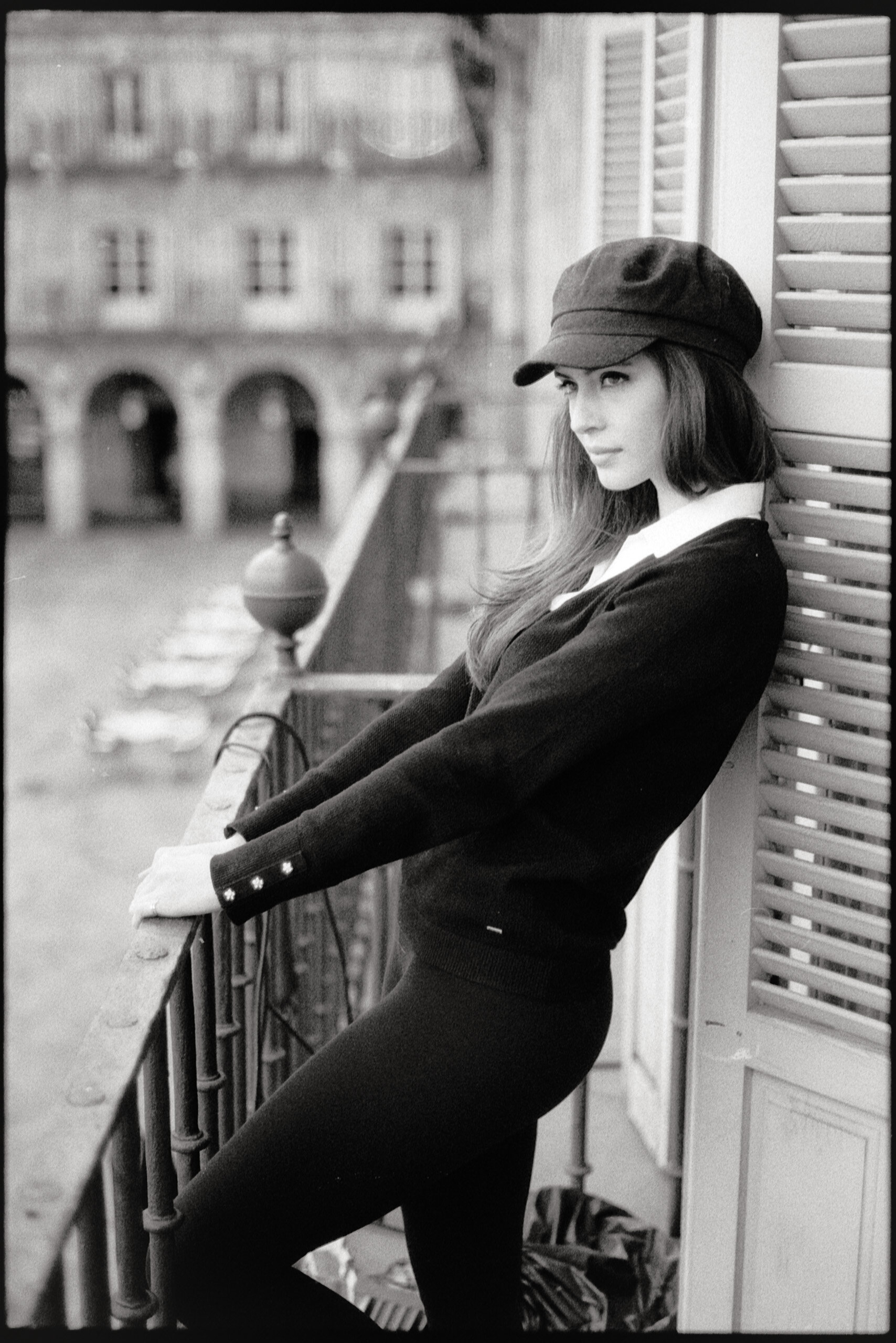"Beauty can be represented in many ways." - Luis S. Martin in conversation with Thomas Berlin
Luis S. Martin
Luis is a Spanish fine art photographer based near Madrid. He is known for his poetic analog images. We did some shooting days together in Cadiz and talked about photography and more.
Image: Lutton Gant
Thomas Berlin: Luis, I know that you don’t want to be categorised. Thats the reason why I am not introducing you as interviewee regrading your genres. But how would you describe your picture style?
Luis Martin: Well, I would prefer my pictures talk about my style. Somebody said that if you need too many words to explain a photo, then most probable that is not a good one.
I am not too worried about my style; my main motivation is to improve and find new ways of expression and inspiration.
Thomas Berlin: Is beauty in the mainstream sense decisive for your model selection or would you also work with models that do not correspond to the common ideal of beauty?
Luis Martin: I try to work with models that can transmit feelings or evoke a story or situation: delicacy, elegancy, strength, mystery, shyness, determination or many others, depending on the purpose of the shooting. I think that beauty can be represented in many ways.
Thomas Berlin: Your pictures are mostly in black and white. What is the reason for that preference?
Luis Martin: I actually shoot both B&W and Color, but it is true that I tend to show and post more my black and white work. I am probably biased because I do love it. I am big admirer of the old master photographers and their iconic works, as well as a big fan of the film noir movies. They are always a good source of inspiration.
Shooting B&W allows me to control all along the process from the shooting to the final images, it means having to choose among different films stocks, developers, and developing methods for example.
I try to do the same with color but even when the developing process is more standardised (C41), the negative digitalisation through “affordable” scanners or digital cameras, is not as consistent and reliable than it is with b&w negatives. So, I sometimes use the services of some of the excellent film labs available. Most probably I will show more of my color work soon.
Thomas Berlin: When are you satisfied with a picture?
Luis Martin: My intuitive and irrational “artistic” side has big prevalence. Obviously, the rational one is always working, specially focusing on the technical details. But most often feelings win so I am satisfied with an image with an evident imperfection if I think the feeling it transmits is worthwhile.
Thomas Berlin: How important is it to you that other people like your picture?
Luis Martin: Yes. It is important I can't deny it and I feel good when people like my pictures. Nevertheless, with the time I am increasingly paying more attention to different opinions and constructive criticism from the people I admire and follow. A good way to get that people appreciate your work is being honest with yourself and keeping up improving and growing.
Thomas Berlin: How do you deal with light? When is natural light and when is artificial light your choice?
Luis Martin: I use natural light frequently, it requires to study and planning the location, timing, posing, kind of film, etc. with some advance. Nevertheless, I am increasingly combining more natural with artificial light as a support adding shadows or lighting some elements of the scene. For commissions and when a more commercial look is required, I use artificial light both in studio and on locations.
Thomas Berlin: You rarely or never release no nude photos …
Luis Martin: I really like and appreciate artistic nude photos and I do nude shootings every now and then. I like showing sensuality in combination with other aspects or feelings where nude only plays a complementary role.
Thomas Berlin: Please sort the following ingredients of a people shoot according to decreasing priority for your work: model, concept, location, camera equipment, light, spirit of the photographer
Luis Martin: model&spirit of the photographer, concept, light, location, camera equipment. Let me join model with the spirit of the photographer since I think the final result is highly dependable on the communication and empathy between them.
Thomas Berlin: Let's get to technology: Which cameras / formats do you mainly work with?
Luis Martin: Ok, Lets name “only” my workhorses.
35mm: Nikon FM2 & FM3a, Canon Eos3.
Medium format: Pentax67, Contax645.
Large Format 4x5 David Burnett combo (Graflex speed Graphic with Kodak Aeroektar 178mm)
Instant Film: Mamiya Universal, Polaroid 180 land camera and Polaroid SX70
And I also love the last technology, so I recently acquired a Canon R5 camera for commercial works.
Thomas Berlin: Why actually so many analog cameras? Isn't that an anachronism?
Luis Martin: I understand it may look like a bit rare or weird. I approached film photography years ago when I saw the work of some contemporaneous photographers, their works looked so beautiful and different with such a charm feeling and authenticity that it encouraged me to join the film community and start a continuous and endless self-taught process. A bit later the way I took pictures changed, it slowed down, putting more attention to each shot. Then I also start loving the process itself and those such beautiful analog cameras and finally that feeling about doing something organic and in-temporal, appreciating the value of each photo. So, the initial interest turned into a passion soon.
Thomas Berlin: You have described procedural aspects of analog photography that suit you. But can we go deeper in terms of the analog image look? What is the special visual appeal of analog images? Can't it also be generated digitally?
Luis Martin: There is something curious about this point. We all know that the look of film is being widely simulated. It can be found in many fashion editorials and other professional works, and its use is also extended in Instagram.
The curiosity comes from the fact that this specific look so well recognised only matches film under certain circumstances and stocks, for example if the film is underexposed, expired and with a lot of dust, not a good representation indeed of the diversity you can get from the different film stocks. It is so popular till the point that some analog works, especially if they have fine grain or good contrast, don’t look analog anymore in a general understanding.
Thomas Berlin: What advice can you give experienced digital people photographers who are considering taking additional analogue photographs?
Luis Martin: Just try to have fun and enjoy shooting film keeping it simple, starting with a standard negative black&white and color film stocks and then send the rolls to a good film lab for their developing and scan. The labs offer very valuable advice and feedback of great help.
Get the chance to shoot medium format, borrowing, renting, or buying an affordable 120 film camera. It is worthwhile testing the step up in quality for first time. Take care, you may fall in love.
Thomas Berlin: Do models perceive analog photo technology differently? How do the models react when you shoot with cameras from the last Century?
Luis Martin: They know in advance that we will shoot film. During the shooting most of them feel very curious about the camera and how I upload the film. They usually ask what I do with the rolls after.
I always explain the differences of modelling when shooting film to new models. Derived from having only 10 pictures per roll, focusing manually most of the times, with a very narrow depth of field, the longer time for loading, marking film. Many of them are used to listening the continuous and rhythmical sound of a digital shutter release to feel comfortable, that also acts as a trigger to modify their gesture or posture.
Thomas Berlin: With which combination of a camera and two lenses could you (if it were necessary) to do 80% of your shootings?
Luis Martin: My favorite camera is the Pentax67 but for the purpose you mention let’s say the Contax645 with an 80mm f/2 lens (approx. 50m equivalent for 35mm film) and 45mm f/2.8 (approx. 28mm equivalent).
Thomas Berlin: Many of your pictures look timelessly beautiful. Is there a historical photographer role model?
Luis Martin: I can’t name just a single photographer as a role model, I really enjoy exploring the work of amazing photographers of all decades with no special attention to the time, but it is true that I love and get lot of inspiration from some of the classics, the masters.
Thomas Berlin: Which current photographers and models inspire you?
Luis Martin: Having a look to my library and my most recent google search:
Jeanloup Sieff, Irving Penn, Helmut Newton, Annie Leibovitz, Guy Bourdin, Nobuyoshi Araki, Patrick Demarchelier, Michel Comte, Cristina Garcia Rodero, Steven Meisel, Hiro, Sally Mann, Gianpaolo Barbieri, Meeri Koutaniemi, Javier Vallhonrat, Herb Ritts, Peter Lindbergh, Tyen, Mario Testino, Vincent Peters, Saul Leiter… and so many others.
Probably we could not refer to all of the list above as “current photographers”, even some of them are not with us anymore, but I think their influence is still very present and noticeable today.
The role of the model is very relevant, the result is always a teamwork. Every photographer with every model and shooting circumstances set a unique combination, so I try not to approach models as source of inspiration but maybe more as an estimative source of possibilities or qualities for a determined project. Said that, in my Insta you can see Emma, Rebeca, Paula… as some of my main recurrent models.
Thomas Berlin: What is the most important skill your models should have?
Luis Martin: From my point of view, the most important thing is how we can create together images that transmit some feeling and are able to get into the viewer.
Thomas Berlin: How should photographers behave towards models? How do you act to the person you are photographing?
Luis Martin: Always with fundamental respect for each other as humans as well as partners involved in a creative project. If you ask me more concretely about the practices during the shooting, there are certainly some of them that I naturally put in place with my male and female models. I avoid touching them for any reason and I try to make them feel comfortable in every sense. Many times, you only need to put yourself in their shoes. In any case they show high respect for me as well with the extra dose of patience needed shooting film with different cameras in many times long outdoor sessions. I am convinced that a good communication before and during the shooting is crucial.
Thomas Berlin: Do you create mood boards before shootings? (why or why not?). Do you share this with the models?
Luis Martin: Yes, I do. For me It is essential the models get involved and they know what the shooting is expected to be in advance. I usually share and discuss one or more mood boards involving style, MUA, poses etc. together with the the feeling and concept.
Thomas Berlin: How do you prepare for a shoot?
Luis Martin: If the shooting is a commissioning, I try to understand first the objective, concept and aesthetics expected or required by the customer, I generally contribute and help with my ideas and experience to finally define the project. For personal works there are two possibilities: I have a specific studied project or sometimes it happens that I have some resources available, like for example model or special location so I prepare the project based on that.
Team involved, mood boards as explained above and the technical part are integrated together.
Thomas Berlin: How important is social media for your success and inspiration? What do you use?
Luis Martin: I am not very fan of Social media, in fact the only one I have ever used is Instagram (@lsmartphoto) but I recognize that today you need to be there to exist. I post one picture / carrousel per day and some stories from time to time.
Thomas Berlin: That is exciting information. Now of course it is interesting how and when you got into photography? Did you do anything creative before?
Luis Martin: I got into photography as recovering from illness around 15 years ago. At that time apart of having studied some music my background was essentially technical as a young industrial engineer. Nevertheless, photography became immediately an intense part of my life till now.
Thomas Berlin: Is there a metaphor that suits you particularly well?
Luis Martin: I don’t know if it is a good description, but let’s say that I am a “Less is More” believer having great difficulty to follow it in real practice.
Thomas Berlin: What is your passion besides photography?
Luis Martin: I have had some passions, but probably the only one durable and still growing is photography.
Music is a seasonal passion; I play at home some guitars and tin whistles. Sports, I played basketball during some years. Nature Life, I enjoyed the mountains hiking, cycling or paragliding, I still have the glide and rest of equipment gathering dust.
Thomas Berlin: Luis, do you want to say something else?
Luis Martin: Enough, Thanks so much for the interview Thomas, it was a great experience shooting together and a real pleasure to discuss with you about photography and life.
Images above: © Luis S. Martin


















